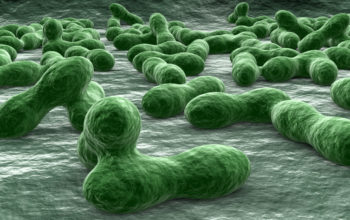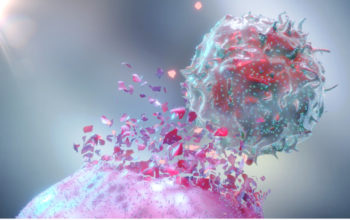
Date: 31st March 2020
Beta coronaviruses (CoV) have caused three zoonotic outbreaks in the last two decades; SARS-CoV in 2002–2003, MERS-CoV in 2012, and the most recent COVID-19 pandemic which is caused by SARS-CoV-2. Now scientists have developed a SARS-CoV-2 lentiviral pseudotype system to aid the safe study of the virus, which they have used to characterise the virus cell entry mechanism leading to the identification of several potential drug targets.
Coronaviruses (CoVs) possess spike glycoproteins (S proteins), these are structural proteins responsible for the crown-like shape of the viral particles. They contribute to cell receptor binding to mediate membrane fusion and virus entry, and are the main target for designing neutralisation antibodies.
With the devastating effects COVID-19 is having upon the world, and with little known about the biology of the virus, scientists led by Zhaohui Qian, from Bejjing, China, wanted to learn more about the role S proteins have in viral tissue tropism (the cells and tissues of a host that support growth of a particular virus) and pathogenesis.
Pseudovirion platform
As a starting point, to bypass the need for specialised biosafety level 3 (BSL3) equipment, the team first developed a pseudotype system with the S protein of SARS-CoV-2 to study virus entry. By incorporating the S protein into lentiviral pseudovirons, termed SARS-CoV-2 S pseudovirions, the team could study SARS-CoV-2 more easily.
To then test the response of different cell types to viral infection, the team screened a panel of human, bat and monkey cell lines for their susceptibility to SARS-CoV-2 S-mediated transduction, they also compared the results with SARS-CoV S pseudovirions (particles carrying viral S proteins from the 2002 version of SARS). They found that a human lung cancer cell line was highly susceptible to both CoVs, which might give some indication of why both viruses cause respiratory problems. A human liver cell line, and monkey kidney cell line were also susceptible but less so.
Entry receptors
The team then wanted to see whether any known CoV receptors might be used by SARS-CoV-2 S protein as an entry receptor. They tested the ability of the pseudovirions to transduce cell lines that stably expressed the different known CoV entry receptors. One such line expressing the human angiotensin-converting enzyme 2 (hACE2) receptor, which is used by SARS-CoV, was responsible for binding and entry, and SARS-CoV-2 S protein could directly bind to hACE2 protein. Furthermore, the entry of SARS-CoV-2 S pseudovirions was prevented by pre-incubation of soluble hACE2, suggesting this may be a potential therapeutic inhibitor against SARS-CoV-2 infection.
Viral cell entry via endocytosis
The team then went on to determine whether SARS-CoV-2 S pseudovirons entered cells through endocytosis or via the cell surface. They treated the cells with lysosomotropic agents (these are weak bases which penetrate into lysosomes and can inhibit pH dependent endocytosis), and evaluated the ability of the pseudovirions to enter the cells. They saw more than a 98% reduction in transduction upon treatment with these agents, suggesting that SARS-CoV-2 main entry into the cell is via endocytosis.
As phosphoinositides (PIs) play many essential roles in endocytosis, the team went on to inhibit several players in the PI pathway. They discovered phosphatidylinositol 3-phosphate 5-kinase (PIKfyve), the main enzyme synthesising one of the important PIs (phosphatidylinositol-3,5-bisphosphate (PI(3,5)P2)) in early endosomes, and a two pore channel subtype 2 (TPC2), which is a major downstream effector of PI(3,5)P2 were crucial for SARS-CoV-2 S cell entry. These results indicate these two molecules may be good potential future drug targets for viruses that enter cells through endocytosis.
Protease activation of S protein is also an important step for coronavirus entry, and cathepsins in lysosomes have been shown to be critical for SARS-CoV and MERS-CoV entry through endocytosis. Using cathepsin B or L inhibitor treatments the team showed that cathepsin B inhibition did not show any marked effect on virus entry, however, cathepsin L was critical for entry, and its inhibition decreased entry of SARS-CoV-2 S pseudovirions into target cells by over 76%.
S proteins cleaved by cellular proteases such as trypsin, can also induce large syncytium formations, where the fusion of an infected cell with neighbouring cells leads to the formation of multi-nucleate enlarged cells. The team, here, showed that trypsin activated SARS-CoV-2 S protein efficiently and induced syncytium formation, however, much to the teams surprise syncytium formation was also seen in the absence of trypsin. This ability to trigger protease-independent and receptor-dependent syncytium formation may partially explain the rapid progress of the disease, enhancing viral spreading through cell-cell fusion.
Vaccine development is likely to be key to fighting COVID-19, as S proteins are surface-exposed, and mediate entry into host cells, they are a main target of neutralising antibodies upon infection and the focus of therapeutic and vaccine design. As the S proteins of SARS-CoV-2 and SARS-CoV are highly homologous the team wondered whether an anti-SARS S1 antibody would cross-react. Unfortunately, it did not bind to SARS-CoV-2 S protein well, and poorly neutralised SARS-CoV-2 S protein-mediated virus entry. Furthermore, using convalescent sera from SARS and COVID-19 patients, the team demonstrated that only moderate cross-neutralisation activity was observed, suggesting that recovering from one of the diseases would not offer protection from the other.

Conclusions and future applications
The team have demonstrated that SARS-CoV-2 S protein entry on target cells (here cells stably expressing hACE2) was mainly mediated through endocytosis, and that a key enzyme synthesising phosphoinositides (PIKfyve), a major downstream effector (TPC2), and cathepsin L are critical for viral entry.
These findings should provide valuable information to accelerate the development of targeting drugs, and to progress vaccine design. Furthermore, the platform developed here may allow a ‘first-pass’ screening tool for potential treatments due to its biosafety level downgrade.
The cross-neutralisation using convalescent sera showed only modest protection, this was seen using serum from a recovered SARS patient against SARS-CoV-2 S pseudovirons, whilst COVID-19 convalescent sera offered no protection against SARS-CoV S pseudovirions. However, it is promising to note that sera from all five COVID-19 patients neutralised SARS-CoV-2 S pseudovirions effectively. With the FDA approving the use of convalescent plasma to treat critically ill patients last week, these results lend weight to its use.
The FDA has also backtracked on the use of anti-malaria drugs in the last few days. They have now allowed hydroxychloroquine and chloroquine products to be administered to certain hospitalised patients with COVID-19. It should be noted that chloroquine is also a lysosomotropic agent, with the results here showing the successful inhibition of virus entry using such agents, the data perhaps reinforces the use of this drug.
Lets hope that, with this study and others that are quickly increasing our knowledge of COVID-19 biology, inroads into treatments and vaccines can made rapidly.
Ou, X., Y. Liu, X. Lei, P. Li, D. Mi, L. Ren, L. Guo, R. Guo, T. Chen, J. Hu, Z. Xiang, Z. Mu, X. Chen, J. Chen, K. Hu, Q. Jin, J. Wang and Z. Qian (2020). “Characterization of spike glycoprotein of SARS-CoV-2 on virus entry and its immune cross-reactivity with SARS-CoV.” Nature Communications 11(1): 1620.
https://doi.org/10.1038/s41467-020-15562-9


